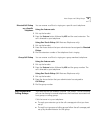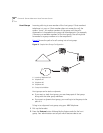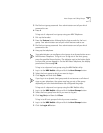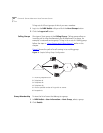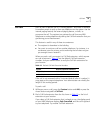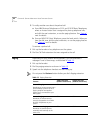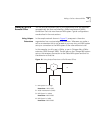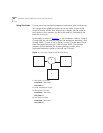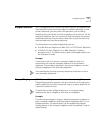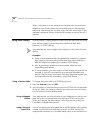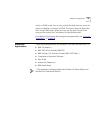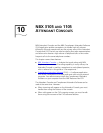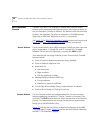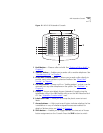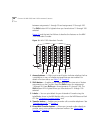
Bridged Extensions 97
Bridged Extensions With a bridged extension, buttons and status lights on one telephone are
associated with buttons and status lights on another telephone. On the
primary telephone, you can perform all operations (such as dialing
telephone calls, placing calls on hold, forwarding calls, and so on). On the
secondary telephone, you can answer calls that are made to the primary
telephone’s extension but you cannot make calls using the buttons that
are associated with the primary telephone.
The administrator can create bridged extensions on:
■ Any NBX Business Telephone or NBX 3101 or 3101SP Basic Telephone
■ An NBX 2101 Basic Telephone if an NBX Attendant Console is
associated with it. The administrator creates the bridged extension on
the Attendant Console.
Example:
If an assistant’s job is to answer a manager’s telephone calls, the
administrator can map the manager’s extension on the assistant’s
telephone. The manager’s telephone is the primary telephone, and the
assistant’s telephone is the secondary telephone.
Your administrator can map a primary telephone’s extension to one or
more secondary telephones.
Delayed Ringing (NBX Business Telephone and Attendant Console only) The
Delayed Ringing feature prevents a call on a shared line from ringing on a
specific telephone until the incoming call rings on another telephone for
a specified number of times.
A shared line can be a bridged extension or an incoming analog
telephone line that is mapped to more than one telephone.
Example:
The administrator programs (maps) a telephone extension to appear on
both a manager’s telephone and the assistant’s telephone; that is, it is a
bridged extension. The administrator has also enabled the Delayed
Ringing feature on the manager’s telephone and has specified 4 rings (a
typical setting).



